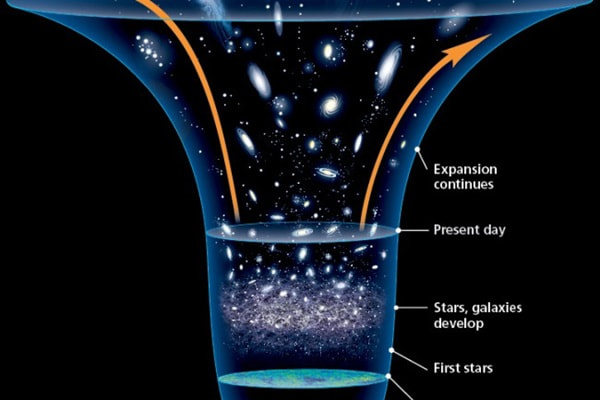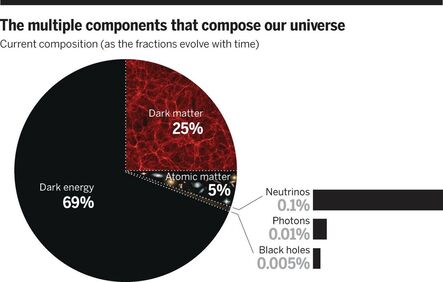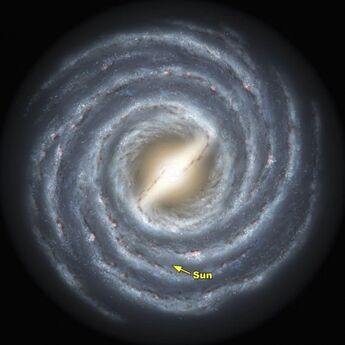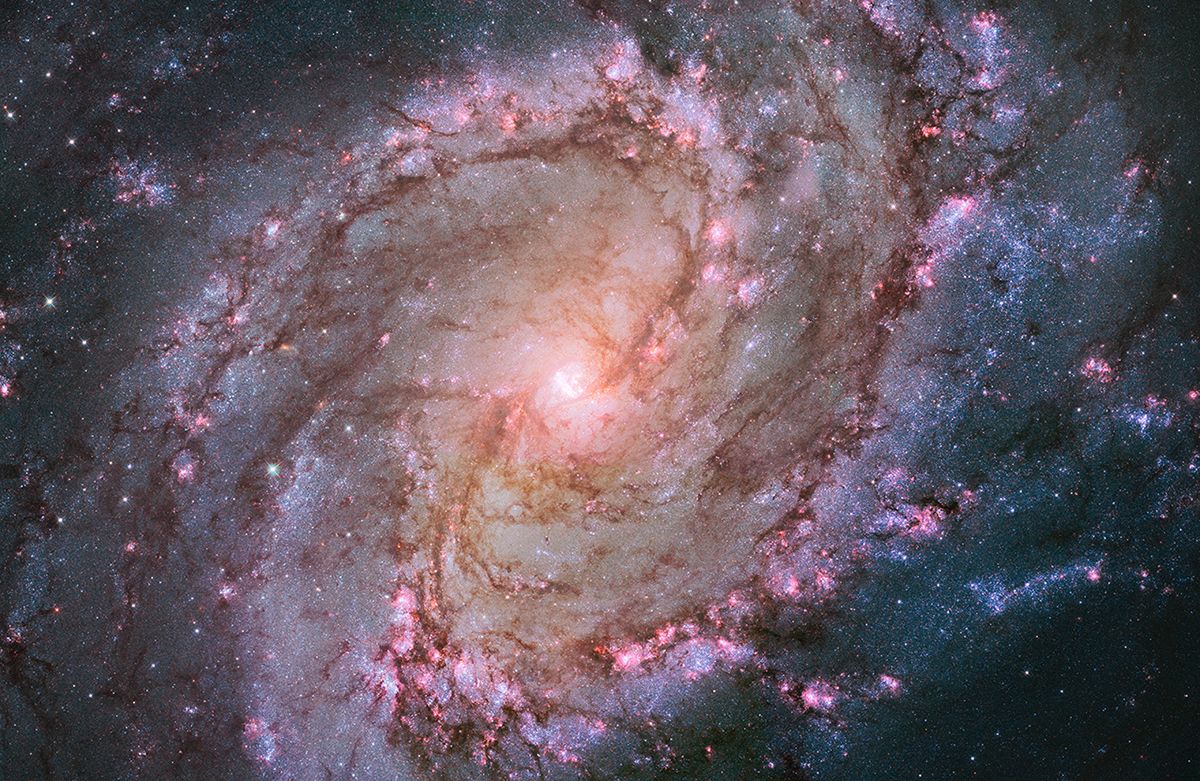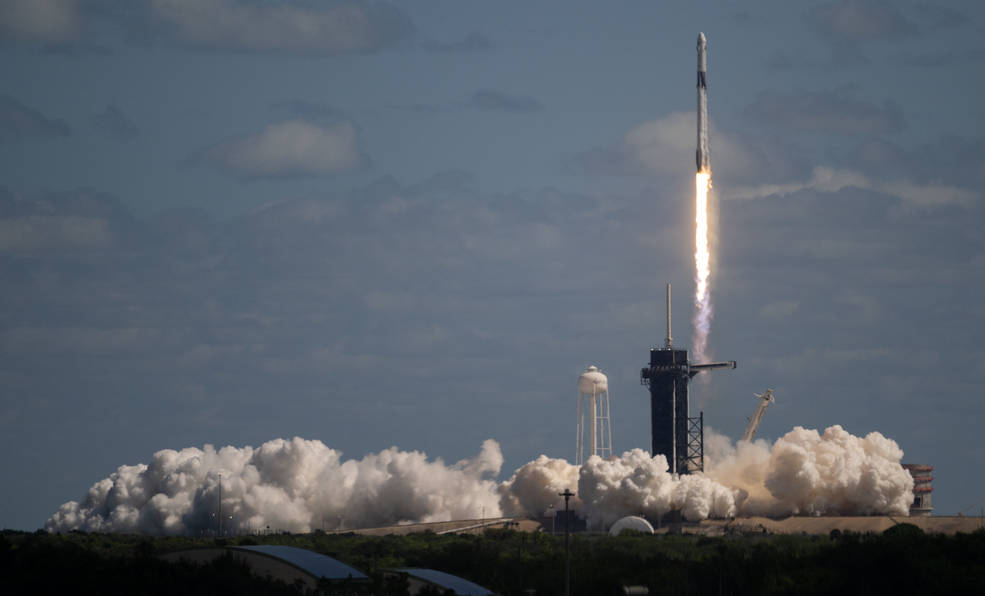|
Richard Branson's satellite launch company, Virgin Orbit Holdings Inc., has filed for bankruptcy due to a lack of capital in an increasingly cutthroat industry. On Tuesday, the firm declared that it was trying to sell itself since it could not improve its financial situation with new funding. After pouring over a billion dollars into the company, which had promising prospects in the burgeoning commercial-satellite launch market, Branson has suffered a major setback.
As demand for satellite launches increased and access to Russian options dried up following Moscow's invasion of Ukraine, Virgin Orbit was founded to fill the void. The company's innovative approach involves shooting satellites from under the wing of a Boeing 747 jumbo airplane. The firm promoted itself as an industry disruptor, with the ability to take off on short notice from any airstrip equipped to handle large aircraft. Nevertheless, this approach was at odds with that of Elon Musk's SpaceX, which deploys satellites via vertical launchers. The failure of the launch from England in January marked the beginning of the end for Virgin Orbit. The failure occurred when finance was scarce and investors were wary of investing in new technology ventures, such as a satellite launcher. As a result of the Covid-19 epidemic shutdowns and travel restrictions, even Mr. Branson's privately held Virgin Group, which includes airlines and cruise cruises, suffered losses. Notwithstanding all of these setbacks, Mr. Branson's space endeavors were a shining light. Only three months before it was set to make history by launching the first satellites from the United Kingdom, Virgin Orbit declared bankruptcy. The satellites it carried were destroyed after the high-profile launch. The company said last week that it will be laying off 675 workers, or approximately 85% of its overall personnel, in an effort to cut costs. After filing for chapter 11 with the U.S. Bankruptcy Court for the District of Delaware, Virgin Orbit obtained $31.6 million in debtor-in-possession financing from Virgin Investments Ltd. The company said it would use the money to keep running while it looked for a buyer. Companies that have followed Virgin Orbit's lead and gone public as SPACs have not been immune to bankruptcy. Similar to Virgin Orbit, grocery delivery service Boxed Inc. disclosed on a Sunday that it had filed for bankruptcy after completing a merger with a special-purpose acquisition firm in the same month and year. In conclusion, the demise of Virgin Orbit is a major setback for Richard Branson's space endeavors. Yet, businesses should know that filing for bankruptcy is not the end of the road. It's possible that, with the correct strategy, Virgin Orbit can bounce back and keep putting satellites into orbit.
2 Comments
An ongoing dispute between the central Iraqi government and Kurdish authorities over oil sales, which was preventing the export of over 500,000 barrels per day and driving up petroleum prices, has been resolved. The agreement reopens the pipeline that transports oil from Iraqi Kurdistan to the Turkish port of Ceyhan, from whence it is shipped to European markets. As part of the agreement, the Kurds conceded to demands long made by Baghdad that they sell oil through the Iraqi national oil firm and put the money in the central bank. An important oil pipeline in northern Iraq was shut down because of the conflict around a week ago, driving up global crude prices to near $80 per barrel and threatening supplies in European countries seeking alternatives to Russian fuel. Iraq is the world's fifth-largest oil producer, and the pipeline transports around 400,000 barrels per day from Iraqi Kurdistan and an additional 70,000 barrels from the rest of Iraq.
According to the World Bank, Iraq is one of the world's most oil-dependent countries, and Prime Minister Mohammed al-Sudani has stated that the restricted oil exports are harming government revenue. The World Bank estimates that Iraq's oil revenues make up more than 85% of the country's total budget. Baghdad and the oil-rich northern area, where Kurdish have governed themselves with some freedom since the US deposed Saddam Hussein in 2003, have been at odds for years, but this arrangement gives a short-term solution to the problem. Oil from the landlocked Kurdish region can only reach the global market through the pipeline. Refiners in the Mediterranean and China receive shipments from businesses like Vitol and Phillips 66, as well as the private Swiss dealer Petraco Oil Co. Since most EU states banned Russian crude imports as part of sanctions against Moscow at the end of last year, the pipeline's significance to Europe has grown. Data from commodities-tracking firm Kpler shows that this year Italy, Romania, Croatia, and Greece have used Kurdish crude in favor of oil from Moscow. Producers like Norway's DNO ASA, Genel Energy PLC, and Gulf Keystone Petroleum Ltd. are ready to get back to work as soon as the temporary arrangement is finalized. Nevertheless, some oil executives at international businesses are concerned that the accord could yet break apart, leading to another export ban. Nonetheless, representatives from both the Kurdish and central governments have pledged to move swiftly forward with meaningful negotiations to codify the allocation of revenue from oil sales. For Iraqi Kurdistan, where the majority of the region's economy relies on exports, the stakes are especially high. Analysts and company representatives participating in Kurdistan warn that a final agreement acceptable to all sides may be difficult to achieve. CC :WSJ,Boston globe, NY Proteins are essential to all forms of life and serve several roles within cells and organisms. To make progress in domains like medication development, biotechnology, and synthetic biology, it is essential to comprehend their structure and function. It has long been difficult to develop novel proteins with desired characteristics.
Protein design has recently made strides forward thanks to the integration of novel algorithmic and experimental approaches. These developments have increased the speed of protein design research by a factor of 10, opening the door to exciting new discoveries and potential uses. Using deep learning to predict protein structures is a significant algorithmic improvement. Deep learning is a subfield of AI that makes use of neural networks to find patterns in data. The structure of unknown proteins can be accurately predicted by deep learning algorithms by studying massive datasets of known protein structures. This method has been utilized to create enzymes with novel catalytic capabilities and proteins with the ability to bind to previously unattainable targets like cancer cells. The creation of realistic models of protein folding is another major advance in computational biology. The formation of a three-dimensional structure in a protein chain is known as folding. If we want to create novel proteins that can do specific things, we need to understand how this process works. Nevertheless, protein folding simulation has always been a resource-intensive process. In order to speed up the process of designing and testing novel proteins, new algorithms have recently been developed to mimic protein folding considerably more quickly than before. Not only have these algorithmic developments sped up protein design research, but so have novel experimental approaches. A technique like this is called directed evolution. Generating random mutations in a protein gene and then screening for variations with desirable features is an example of directed evolution. The method has been utilized to create proteins with enhanced properties like stability, catalytic activity, and binding affinity. High-throughput screening is another experimental approach that has boosted protein engineering. In high-throughput screening, several proteins are tested simultaneously to find the ones with the right characteristics. This method has been used to create proteins that perform novel tasks, such as those that can sequester atmospheric carbon dioxide. The science of protein design has been profoundly affected by the convergence of these cutting-edge computational and experimental approaches. Because to advancements in protein design and testing, scientists may make discoveries and put them to use much more rapidly than ever before. New discoveries in areas like medicine, biotechnology, and synthetic biology seem to benefit greatly from ongoing efforts to improve protein design. It is anticipated that the 2023 Indian Premier League (IPL) is going to be even more thrilling. The ten participating teams are the Chennai Super Kings, Mumbai Indians, Kolkata Knight Riders, Sunrisers Hyderabad, Royal Challengers Bangalore, Gujarat Titans, Rajasthan Royals, Punjab Kings, Delhi Capitals, and Lucknow Super Giants.
The first game of IPL 2023 will be played in Ahmedabad's Narendra Modi Stadium, between the Chennai Super Kings and the Gujarat Titans. Under MS Dhoni's seasoned leadership, the Chennai Super Kings have won the IPL four times. They're aiming for another championship performance this year. Five IPL titles make Mumbai Indians the most successful team. They want another trophy this year as we know Rohit Sharma is probably already planning for the season. Kolkata Knight Riders, Sunrisers Hyderabad, and Rajasthan Royals have all won the IPL once and will seek another crown this year. Gujarat Titans, the reigning champs, want to keep winning as they have posted on their Twitter handle they are "coming to defend the cup/championship." Royal Challengers Bangalore, Punjab Kings, Delhi Capitals, and Lucknow Super Giants want to win the IPL this year as they have not got a Championship till date, maybe one of the teams will make history this season! New players and fascinating matchups make the IPL 2023 season exciting. The opening match between Chennai Super Kings and Gujarat Titans will be a thrilling start to the season for cricket lovers worldwide. Yesterday (29 January 2023), the 2nd T20I match occurred at AB Vajpayee Ekana Stadium, Lucknow. India was bowling first in this match, and New Zealand was batting. The highlights of the match were that Yuzvendra Chahal bowled Finn Allen out of the match, along with Mark Chapman getting a run out by Kuldeep Yadav. Suryakumar Yadav made India the most runs yesterday; he had 26 runs in total and was not out. As for New Zealand's highest runs, Mitchell Santner achieved this, and he also was not out. Overall, the match's final score was 99/8 for New Zealand and 101/4 for India. India won by six wickets with one ball left in the match! The last match of the T20I between India and New Zealand will take place on 1 February 2023 (Wednesday), with a 67% chance of India winning.
The climate and tax law, which President Biden signed in August and aims to boost American manufacturing while promoting the use of renewable energy and electric vehicles, seems to be having some success. The construction of a sizable manufacturing center in Georgia will cost $2.5 billion, according to a Korean solar business named Hanwha Qcells, which made the announcement on Wednesday. Both entire solar panels and essential solar panel components will be produced at the site. A portion of the supply chain for solar energy, which is currently headquartered primarily in China, might move to the United States if the company's ambitions come to fruition. Seoul-based Qcells claimed that the investment was being made in order to benefit from tax incentives and other provisions of the Inflation Reduction Act, a measure that Mr. Biden signed last summer. Around 50 miles to the northwest of Atlanta, in Cartersville, Georgia, and at an existing plant in Dalton, Georgia, the industrial complex is predicted to generate 2,500 employment. The new factory is anticipated to begin producing in 2024. The company began producing solar panels in Georgia in 2019 and swiftly rose to become one of the country's largest producers; by the end of 2022, it was producing 12,000 panels per day. The business claimed that the new complex would boost daily production to 60,000 panels. Georgia's Democratic Senator Jon Ossoff and Republican Governor Brian Kemp have aggressively courted renewable energy, battery, and automotive companies. South Korea has made several of these investments, including a planned electric vehicle plant by Hyundai. Mr. Ossoff introduced the Solar Energy Manufacturing for America Act in 2021, which would have provided tax breaks to solar manufacturers. The legislation was eventually incorporated into the Inflation Reduction Act. These and other provisions are designed to reduce reliance on China, which controls the supply chain for critical raw materials and components for batteries and solar panels. In addition to concerns that the United States was losing ground in critical technologies, lawmakers have expressed concern that some Chinese manufacturers were using forced labor. Both parties' legislators and administrations have long sought to boost the domestic solar manufacturing industry, including by imposing tariffs and other restrictions on imported solar panels. However, such efforts have yielded only modest results thus far. The majority of solar panels used in the United States are imported. The Qcells project and others could reduce the United States' reliance on imports, but not immediately. China and other Asian countries have a significant head start in assembling panels and manufacturing the components that go into them. Subsidies, energy policy, trade agreements, and other strategies have also been used by governments in those countries to assist domestic producers. Several other solar companies, including CubicPV, a start-up backed by Bill Gates, have announced new manufacturing plants in the United States in recent months. First Solar, another company, announced in August that it would build its fourth panel manufacturing plant in the United States. First Solar intends to invest $1.2 billion in expanding its operations and creating 1,000 new jobs. CC:Ivan penn and NY times Our universe is dominated by mysterious and invisible forms of matter and energy that remain unfathomable. Dark energy and dark matter are two of the universe's most mysterious and poorly understood components. Both are invisible and cannot be directly detected, but their existence can be deduced from their gravitational effects on ordinary matter.
The majority of our universe is hidden in plain sight. Though we can't see or touch it, most astronomers believe dark matter and dark energy make up the vast majority of the universe. But what exactly is this mysterious, invisible stuff that surrounds us? And what is the distinction between dark energy and dark matter? In short, dark matter slows the expansion of the universe while dark energy accelerates it. Our cosmos is held together by dark matter, a type of cosmic cement, which acts as an attracting force. This is due to the fact that while dark matter does interact with gravity, it does not emit, reflect, or absorb light. Dark energy, a form of anti-gravity, is what propels the universe's speeding expansion while acting as a repulsive force. According to estimates, dark matter accounts for 85% of all the matter in the universe. Dark matter is not visible to telescopes because it does not emit or absorb light like normal matter does. However, the gravitational effects it has on ordinary matter can be used to infer its existence. Scientists assume the presence of dark matter to account for the missing mass since, for instance, they have found that galaxies rotate far more quickly than can be explained by the visible matter alone. Dark energy dominates the two forces by a wide margin, making up about 68 percent of the universe's total mass and energy. A quarter of matter is dark. And the remaining 5 percent, which is a pitiful amount, is just everyday stuff that we see and come into contact with. On the other hand, dark energy is a type of energy that is thought to account for around 68% of the universe's total energy. Dark energy, in contrast to ordinary matter and energy, does not appear to be connected to any specific kind of particle or material. Instead, it's believed to be a characteristic of void space itself. The observed accelerated expansion of the cosmos has led scientists to postulate the presence of dark energy. Fritz Zwicky, a Swiss-born astronomer, noticed something amusing about the activity of the roughly 1,000 galaxies that make up the Coma Cluster when studying photographs of them in the 1930s. The galaxies were moving so quickly that they ought to just break apart. He guessed that they were held together by some sort of "black matter." When astronomers Vera Rubin and Kent Ford examined the rotation speeds of specific galaxies decades later, they discovered a related pattern. A galaxy's farthest stars should revolve more slowly than those closer to the center. Planets in our solar system orbit in that manner. Instead, scientists discovered that the stars farther away from a galaxy orbit at a similar or even quicker rate than the stars closer to it. Rubin and Ford have discovered additional proof that the universe may be held together by an invisible sort of substance. In a previous interview with Discover, Rubin stated that "even stars in the perimeter are orbiting at great velocities." "A lot of mass must exist for the stars to orbit so quickly, but we can't see it. This invisible material is known as dark matter. Now, astronomers have a wealth of more evidence that dark matter exists. In reality, the so-called standard model of cosmology, which serves as the basis for how scientists interpret the origin and development of the universe, includes the existence of dark matter as a given. We are unable to describe how we get here without it. However, that prestigious position puts pressure on cosmologists to discover unambiguous evidence that dark matter exists and that their universe model is accurate. In an effort to find dark matter, physicists from around the world have been using more sophisticated detectors for decades. There are currently no indications of it. Since roughly a century ago, astronomers have been aware that the universe is expanding. The majority of galaxies are migrating away from one another, according to telescopic studies, which suggests that in the distant past, the galaxies were closer together. As a result, supporting data for the Big Bang accumulated. The gravitational force of all the cosmos' stars and galaxies, however, was thought to be halting the universe's expansion. It might even one day undergo a Big Crunch and collapse back in on itself. Although both dark matter and dark energy are invisible and affect ordinary matter in similar ways, it is believed that they are essentially different types of things. Dark energy is supposed to be a characteristic of empty space that exerts an attractive force, while dark matter is thought to be composed of particles that interact with ordinary matter through gravity. Scientists are still investigating dark matter and dark energy to learn more about their properties and consequences even if their exact nature is still mostly unknown. While some theories contend that dark matter is composed of primordial black holes, others contend that it is composed of weakly interacting massive particles (WIMPs). The cosmological constant, a scalar field called quintessence, and the idea of modified gravity, on the other hand, are theories that explain dark energy. In conclusion, despite being among the least understood aspects of the cosmos, dark matter and dark energy are both believed to account for a sizable amount of the universe's overall matter and energy. They are invisible and cannot be seen, but their gravitational effects on ordinary stuff allow us to deduce their presence. Dark matter and dark energy are believed to be fundamentally different types of substances, even though they have similar effects on ordinary matter. Dark matter is made up of particles that interact with ordinary matter through gravity, whereas dark energy is a characteristic of empty space that exerts an attractive force. If you look up into the night sky with a telescope and look beyond what's visible to the naked eye, you'll notice a lot of stars that aren't real. Many of those bright spots are galaxies, which are collections of millions to trillions of stars. Galaxies are made up of stars, dust, and dark matter, which are all held together by gravity. Galaxies are some of the most fascinating and mysterious objects in the universe. They come in a variety of shapes and sizes, from small, irregular galaxies to massive, spiral galaxies like our own Milky Way. But how are these incredible structures formed? The dominant theory holds that galaxies form through a process of hierarchical structure formation, in which small structures merge to form larger ones. This process begins with small fluctuations in the density of matter in the early universe. These fluctuations eventually collapse under their own gravity to form dense, dark matter halos. Normal matter (such as gas and dust) begins to collect and collapse inside these halos, forming the first stars and galaxies. These small galaxies continue to merge and grow over time, eventually forming larger and larger structures. As time passes, the central regions of galaxies become denser and denser, with more and more stars forming. The Milky Way is thought to have formed in this manner, with a dense central bulge surrounded by a flat disk of stars and gas. The presence of dark matter is another important factor in the formation of galaxies. Dark matter is an enigmatic substance that accounts for approximately 85% of all matter in the universe but does not emit or absorb light, rendering it invisible to telescopes. The gravitational effects it has on normal matter, however, indicate its presence. Dark matter is thought to play an important role in the formation and evolution of galaxies because its gravity helps to hold galaxies together and shape their structures. In addition to these processes of hierarchical structure formation, there are other mechanisms that can lead to the formation of galaxies. Galaxy collisions and mergers, for example, can cause bursts of star formation and change the shape and structure of the galaxies involved. Overall, galaxies form in a complex and ongoing process that is still not fully understood. Astronomers continue to investigate galaxies' properties and structures in order to better understand how they form and evolve. Astronomers don't know exactly how galaxies form. After the Big Bang, space was almost entirely made up of hydrogen and helium. Some astronomers believe that gravity drew dust and gas together to form individual stars, which then drew closer together to form collections that eventually became galaxies. Others believe that the mass of what would become galaxies drew together prior to the formation of stars within them. Astronomers are also improving their methods for measuring the mass of individual galaxies, as evidenced by this 2018 study that used the three-dimensional movements of several galaxies to narrow down the Milky Way's mass. Finally, galaxy formation is a complex process that begins with small fluctuations in the density of matter in the early universe. These fluctuations eventually collapse under their own gravity, forming dense, dark matter halos that attract normal matter to form the first stars and galaxies. As small galaxies merge and grow, larger and larger structures, such as spiral galaxies, emerge. Dark matter is also important in the formation of galaxies because it helps to hold them together and shape their structures. Researchers working on fusion energy at the Lawrence Livermore National Laboratory in California revealed on Tuesday that they have achieved a long-awaited breakthrough in simulating the sun's power in a lab.
This prompted enthusiasm among the general people since fusion, the nuclear reaction that creates stars, has long been discussed by scientists as a potential future source of abundant energy. The outcome that was revealed on Tuesday is the first fusion reaction that took place in a lab environment and really created more energy than it consumed to initiate the reaction. If fusion can be implemented on a large scale, it will provide a source of energy that is free of the harmful long-lived radioactive waste produced by today's nuclear power plants, which use the splitting of uranium to produce energy, as well as the pollution and greenhouse gases brought on by the burning of fossil fuels. The planets' atmospheres are heated and illuminated by sunlight produced by the continuous fusion of hydrogen atoms into helium within the sun and stars. Fusion proves to be a very clean energy source in Earth's experimental reactors and laser laboratories. However, there was always a nagging qualification. Scientists' experiments used up more energy than the fusion reactions produced in all of their attempts to regulate the chaotic power of fusion. This changed on December 5 at 1:03 in the morning when 192 massive lasers at the laboratory's National Ignition Facility blasted a tiny cylinder the size of a pencil eraser that contained a frozen nubbin of hydrogen coated in diamond. The cylinder was vaporized by the laser beams that entered it from the top and bottom. The heavier types of hydrogen, deuterium and tritium, were compressed into a fuel pellet the size of a BB as a result of the internal onslaught of X-rays that were produced. The hydrogen pellet was bombarded with 2.05 megajoules of energy, or about a pound of TNT, in a brief period of time that lasted less than 100 trillionths of a second. A flood of neutron particles, a byproduct of fusion, came out, each carrying around 3 megajoules of energy, an increase in energy of 1.5. This went above what laser fusion specialists refer to as the ignition threshold, or the point at which the energy produced by fusion equals the energy of the incoming lasers that initiate the reaction. The National Ignition Facility's development began in 1997, and the successful experiment eventually achieves the ignition aim that was pledged at that time. However, when operations started in 2009, the facility barely produced any fusion energy, which was an embarrassing letdown given the federal government's $3.5 billion investment. Scientists from Livermore finally reported some progress in 2014, but the amount of energy generated was negligible — only enough to power a 60-watt light bulb for five minutes. Over the following few years, there was very little advancement. The facility then produced a far larger energy burst in August of last year, equal to 70% of the energy from the laser light. The program director for weapons physics and design at Livermore, Mark Herrmann, stated in an interview that the researchers then carried out a series of experiments to better understand the unexpected success in August and that they worked to increase laser energy by almost 10% and improve the design of the hydrogen targets. In September, the first laser shot at 2.05 megajoules was made, and that first attempt generated 1.2 megajoules of fusion energy. The spherical hydrogen pellet was not crushed equally, and some of it practically squirted out the side and did not reach fusion temperatures, according to analyses. The researchers made certain modifications that they thought would improve the results. According to Dr. Herrmann, "the forecast before the shot was that it may go up by a factor of two." Actually, it increased a little bit more than that. The National Ignition Facility's primary objective is to carry out experiments that will aid in the maintenance of American nuclear weapons. The implications for generating energy right away are therefore uncertain. Fusion would effectively be an emissions-free source of energy, reducing the need for coal and gas-burning power plants that annually release billions of tons of climate-warming carbon dioxide into the atmosphere. But if ever, it will be a while before fusion is accessible on a broad, practical basis. According to the majority of climate scientists and decision-makers, the world must achieve net-zero emissions by 2050 in order to limit warming to 2 degrees Celsius or the even more ambitious aim of 1.5 degrees Celsius. Tokamaks are doughnut-shaped reactors that have been the mainstay of fusion research up to now. A plasma is a cloud of positively charged nuclei and negatively charged electrons created when hydrogen gas is heated to temperatures high enough to remove the electrons from the hydrogen nuclei. As the nuclei fuse together, energy is released as neutrons that shoot outward are trapped by magnetic fields inside the doughnut-shaped plasma. Although the work at NIF uses a different methodology, not much has been done to make the concept of a laser fusion power plant a reality up to this point. Technology and science both face very big obstacles, according to Dr. Budil. Although NIF is the most potent laser in the world, it is also the slowest and least effective since it uses technology that is many decades old. The device, which is roughly the size of a sports stadium, is made to conduct simple scientific experiments rather than serve as a model for the production of power. Ten shots every week on average. A commercial laser fusion plant would require substantially faster lasers, maybe 10 times faster, capable of firing at a machine gun pace. Additionally, NIF still uses a lot more energy than the fusion reactions do. Even though the most recent experiment yielded a net energy gain in comparison to the energy of the 2.05 megajoules in the entering laser beams, NIF still needed to draw 300 megajoules from the electrical grid in order to produce the brief laser pulse. Even while other kinds of lasers are more effective, researchers say a practical laser fusion power plant will likely need far bigger energy increases than the 1.5 seen in this most recent fusion pulse. Different iterations of the NIF experiment are being studied by researchers elsewhere. The hydrogen might be heated more effectively using other kinds of lasers with different wavelengths. Some scientists prefer a "direct drive" strategy for laser fusion, in which the laser light heats the hydrogen directly. The hydrogen would absorb more energy as a result, but this could potentially lead to unstable fusion processes. The scientists working on the nuclear stockpile, which is the NIF's main objective, will benefit from the findings that were announced on Tuesday. Scientists are trying to replace the data they used to get from underground nuclear bomb detonations, which the United States ceased in 1992, by conducting these nuclear reactions in a lab at a less damaging scale. Dr. Herrmann stated that the facility's increased fusion output will generate more data "that allows us to preserve the confidence in our nuclear deterrent without the necessity for further underground testing." The output, which is 30,000 trillion watts of power, "creates very harsh situations in itself" that are more akin to nuclear weapons exploding. The purpose of this particular Livermore experiment, according to Riccardo Betti, chief scientist of the Laboratory for Laser Energetics at the University of Rochester, who was not participating, is to show that a thermonuclear fuel may be ignited for the first time in a laboratory setting. And this was completed, he continued. "So this is a fantastic outcome." CC : Kenneth Chang , NY times The ISS is now home to a varied international crew that will stay there for five months.
On October 5th, the Crew-5 mission was launched from Florida's NASA Kennedy Space Center, carrying a Dragon spacecraft atop a Falcon 9 rocket. After a 29-hour orbital chase, that Dragon, called Endurance, finally connected with the International Space Station (ISS) today, October 6. At 5:01 p.m. EDT , Endurance made contact with the forward port of the station's Harmony module as the two spacecraft flew over the Atlantic Ocean off the coast of West Africa. Ten minutes later, the docking process was finished. Around 6:45 p.m., the hatches between Endurance and the ISS were opened. EDT, and approximately 10 minutes later, the Crew-5 astronauts—Nicole NASA's Mann and Josh Cassada, Japan's Koichi Wakata, and cosmonaut Anna Kikina—flew onto the orbiting lab. They'll spend five months residing aboard the ISS. Mann, the first Native American woman in space, and Kikina, the first cosmonaut to fly aboard a SpaceX Dragon, have the honor of carrying personal mantles for this journey. Both, as well as Cassada, are first-time space travelers; Wakata has gone to space five times. SpaceX's Crew-3 mission was also transported to and from the ISS by the Dragon Endurance. Four Crew Dragon capsules, which are updated and put through testing before each subsequent flight, are used by SpaceX. The components used by Endurance during flight were a brand-new heat shield, parachutes, and nose cone. Although Falcon 9 with a brand-new first stage was used for the Crew-5 liftoff, SpaceX is also well known for using older rockets. The booster was dazzling white and clear of the soot that is typically seen on the company's reflown first stages. It was painted with NASA's worm insignia. Seven crew members, including four from SpaceX's Crew-4 mission, are already on board the ISS when the Crew-5 astronauts arrive. The countdown to Crew-4's departure from the station, which will occur in roughly a week, starts with the arrival of Crew-5, according to Sarah Walker, director for Dragon mission management at SpaceX. The exact timing of Crew-4's splashdown return off the coast of Florida is dependent on weather, Walker said during yesterday's post-launch press conference. CC: NASA, Josh D |
|






